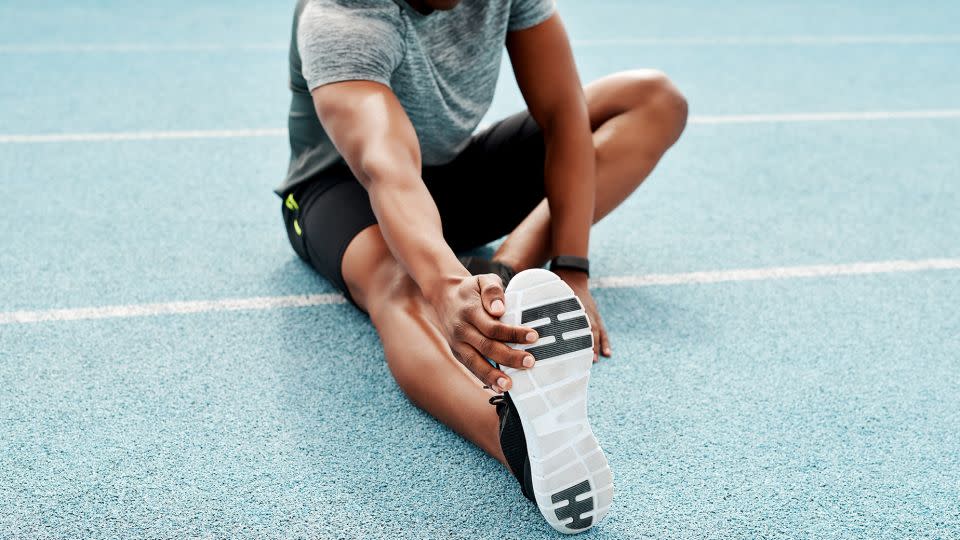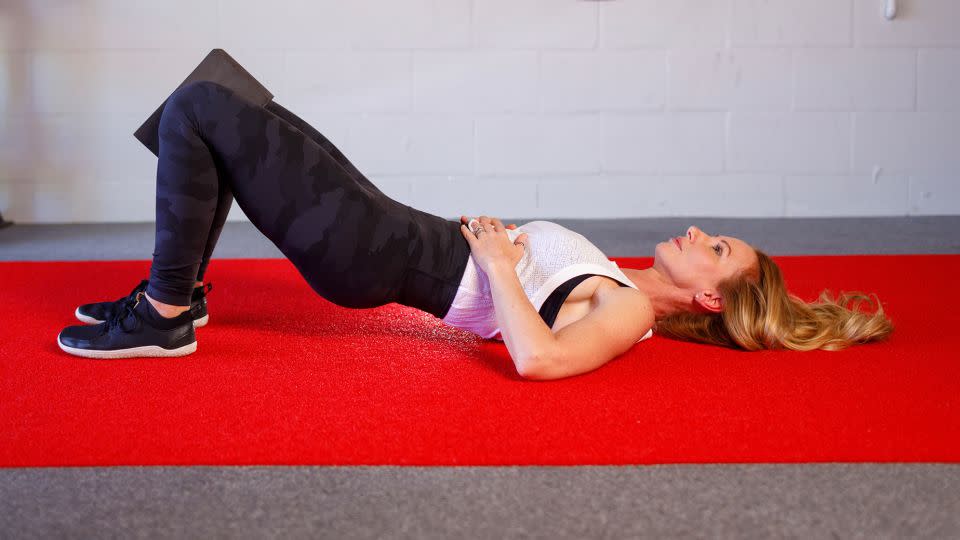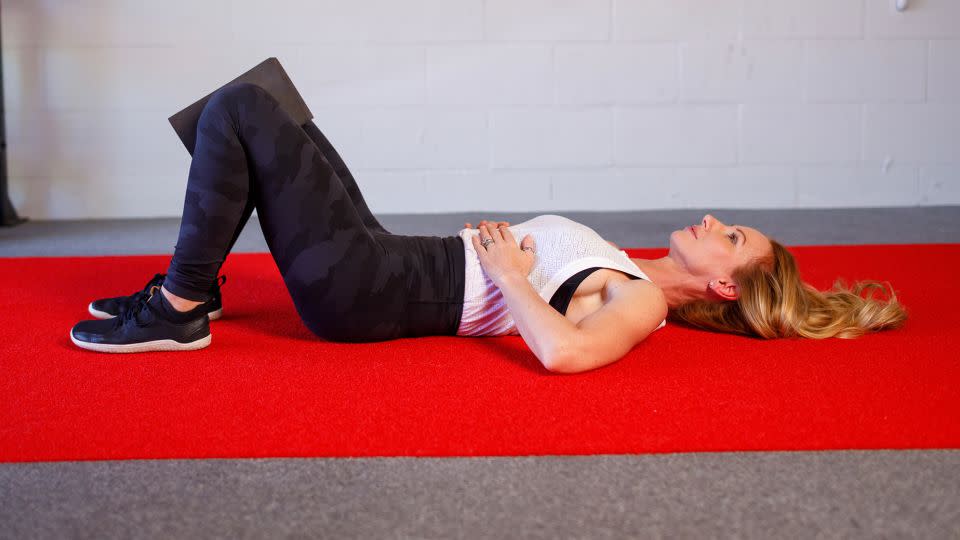Stretching isn’t always the answer for pain and muscle tension
Editor’s note: Dana Santas, known as the “Mobility Maker,” is a certified strength and conditioning specialist and mind-body coach in professional sports, and is the author of the book “Practical Solutions for Back Pain Relief.”
For years, conventional wisdom in fitness culture has promoted the belief that stretching to become more flexible leads to better movement and injury prevention.
But what if I told you that the road to improved mobility isn’t always paved with stretching?
As a mobility coach in professional sports, I’ve learned that the key to healthy movement encompasses a variety of factors determined by your body’s specific needs. And those don’t always include more flexibility.
The stretching misconception
Flexibility is valuable, but it’s not the only consideration for optimizing joint function. Our joints set the foundation for movement by creating the capacity for your range of motion, and your muscles support joint action. Because functional joints require a combination of both mobility and stability, muscles need to be both flexible and strong to support joints properly.
Driven by a pervading assumption that flexibility is the ultimate measure of joint health — and because stretching tends to feel good and takes relatively little effort — people frequently focus much more on stretching than strengthening.
Unfortunately, this imbalanced approach can lead to joint instability, chronic pain and increased risk of injury. And since stretching is often touted as a cure-all for pain, I have seen too many individuals get caught in an unhealthy, painful cycle in which they stretch even more to relieve the tension and pain that they are unwittingly increasing with their continued stretching.
How stretching can increase tension
In cases in which the joints are unstable due to issues such as laxity, injury, hypermobility or misalignment, the body will generally compensate by tightening surrounding muscles to provide additional stability. This compensatory mechanism, known as protective tension, acts to protect you from going into a range of motion that your joint can’t support.
If you don’t recognize when tension is protective in nature and attempt to relieve it by stretching, the body typically responds by increasing the tension. What’s more, stretching aggressively against protective tension can further destabilize the joint and increase the risk of injury.
When stretching isn’t the answer
Before using stretching as a quick fix for muscle tension, it’s important to ask yourself why you feel tight in the first place so you can determine if stretching isn’t advisable.
Knowing the underlying cause of your discomfort will help you recognize protective tension and prioritize the most appropriate approaches, which could include strengthening and corrective exercise to increase stability and restore alignment.
When assessing whether stretching is right for you, you should keep in mind special circumstances, such as pregnancy, in which hormonal changes, including the release of relaxin, can increase joint laxity. Some prescription drugs can also cause joint and muscle pain.
If you’re unsure why you feel tight or if you have a condition that might make stretching inadvisable, consult with your doctor or physical therapist for insight into your specific situation.
The tight hamstring example

When muscles feel tense, the standard assumption is that they are short and tight, making stretching a logical solution. But your body is a little too complex for a cookie-cutter approach. As an example, let’s look at a common issue I encounter in my clients as a mobility coach: tight hamstrings. It might surprise you, but in my two decades of working in professional sports, I’ve found that stretching is rarely the answer for addressing hamstring tension in my athletes.
In the majority of cases I’ve seen, athletes have tight hamstrings due to an anterior pelvic tilt in which the pelvis is dipped forward of neutral. Because the hamstring muscles attach to the pelvis, when the pelvis is shifted anteriorly, it pulls the hamstrings into a lengthened and inhibited state. In this case, the hamstrings feel tense and immobile because they are long and tight rather than short and tight.
While stretching may seem like an intuitive solution for hamstring tension, when these muscles are pulled long by the pelvis, attempting to stretch them more can result in tears and strains in both the hamstrings and low back as well as further destabilization of the pelvis. Instead of stretches, I focus on exercises that promote alignment and stability. One such exercise is the breathing bridge.
How to perform the breathing bridge

This exercise works to restore pelvis position by strengthening the core and glutes while releasing tension in the hip flexors and low back. Although the hamstrings are actively working with the glutes to hold the bridge position, the posterior pelvic tilt relieves the lengthened tension on the hamstrings.
Follow the instructions below or follow along with the video at the top of this article.
Begin on your back with your knees bent and feet on the floor, hip-distance apart, holding a foam yoga block or rolled towel between your knees.
Place your hands on your lower ribs to guide and monitor their movement in and out with each breath.
Exhale fully, drawing your lower ribs in toward each other, feeling your core turn on and your rib cage move down. At the end of that exhale, without inhaling, tuck your tailbone under to posteriorly tilt your pelvis and flatten your low back as you lift your hips 3 or 4 inches off the floor.
Hold this position using the strength of your core and glutes to avoid letting your pelvis dip forward into anterior tilt and your low back arch. Take five long, deep breaths.

Practice two sets for a total of 10 breaths.
Benefiting from stretching: A stable, balanced approach
Stretching can be beneficial and has its place in any well-balanced fitness program that also includes strength training. As mentioned, healthy joints rely on a balance of strong and flexible muscles to create stable mobility.
Dynamic stretching, which is characterized as stretches held for less than 30 seconds and commonly known as mobility training, is the primary type of stretching I use in my work and recommend in warm-ups before strength training or other types of fitness and sport activities. Vinyasa or flowing yoga generally consists of dynamic stretches. Longer-held static stretches of 30 seconds or more should be reserved for cooldowns or recovery days.
When leveraging stretches for targeted issues, ensure there are no contraindications and maintain a balanced approach. For instance, if you’re experiencing low back pain related to tension, a combination of stretching and strengthening would yield best results. You might opt for the breathing bridge exercise mentioned earlier, which provides a blend of strengthening and lengthening benefits. Alternatively, you could rotate between exercises such as child’s pose to elongate low-back muscles and forearm plank to reinforce core muscles and enhance low-back stability.
While stretching can feel good, remember that, when it comes to increasing flexibility, too much of a good thing can become a bad thing. By taking the time to understand the cause of your muscle tension as it relates to a balance of strength and flexibility, you can avoid unnecessary pain and injury to move and feel your best.
Sign up for CNN’s Fitness, But Better newsletter series. Our seven-part guide will help you ease into a healthy routine, backed by experts.
For more CNN news and newsletters create an account at CNN.com
